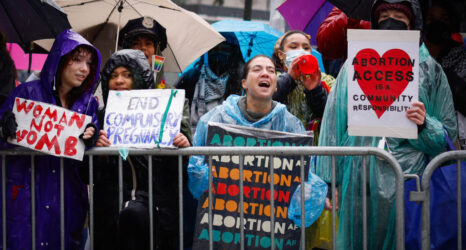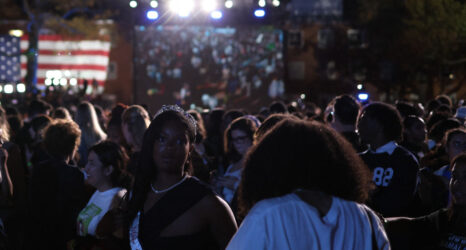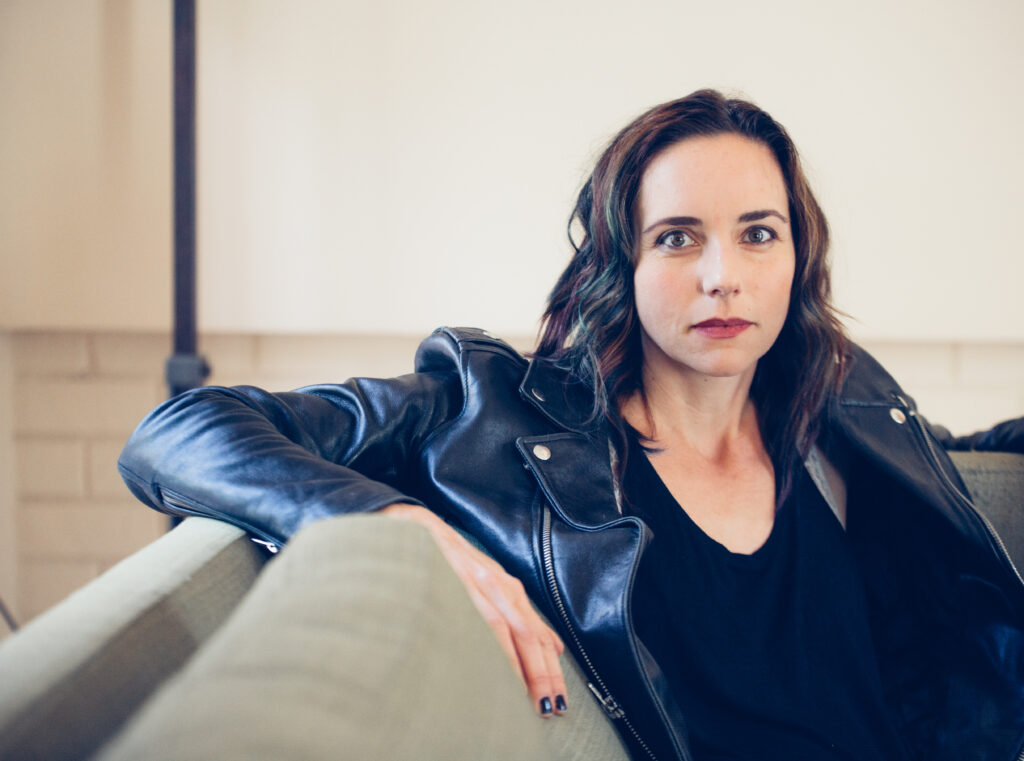
In 2012, when Jenni Hendriks and Ted Caplan first shopped around their teen comedy screenplay about a girl who drives across country to get an abortion, studios passed. As Hendriks says, either “nobody wanted to go there” or people presumed “things are getting better,” making the story a moot point.
But just a few years later, they found themselves in a six-way auction for the young adult fiction book rights. Trump had become President of the U.S., abortion rights were clearly under attack, and #MeToo had evoked a widespread feminist movement.
The resulting book and recent film Unpregnant released by HBO Max in September 2020 chronicle the comedic road trip adventures of the straight-A high school senior Veronica who finds herself pregnant and convinces her former best friend Baily to drive her 1,000 miles across country so she can get an abortion. It turns out that’s the closest clinic that doesn’t require parental consent. (Read Michele Meek’s review of the film here.)
The initial idea for the story came to Hendriks after hearing a report about three-day waiting period laws in South Dakoka. It got her thinking about the “huge burden” such laws place on someone who already needs to drive hundreds of miles to get an abortion.
Ms. writer Michele Meek recently spoke with Hendriks about how Unpregnant tackles abortion—an issue that had largely gone missing from teen comedies for over two decades.
Michele Meek: Since Unpregnant started off as a screenplay in 2012, years before the book and subsequent film, I’m curious about that first conversion of the story from your script to the book.
Jenni Hendriks: In converting a script to a book, you don’t have enough material. So, more scenes were added to deepen their friendship, and we got more backstory.
The actual structure of the story has stayed really similar from the very first draft to the final film. It’s held its shape for the most part. From the beginning, it was always an exploration of how friendship was going to help these two people grow, and we didn’t want to make the character arc come from a debate about her choice.
MM: It seemed like there was also a trajectory of Veronica’s learning how to vocalize her abortion. Is that something that you consciously included in the book and script?
JH: Yeah, she does. It is a journey. She starts off by saying “procedure,” and she’s very hesitant to even type out the word abortion.
And then Bailey says it competently and frequently to various people in the book and the movie. But yes, at the end of the book, she basically announces: ‘I had an abortion.’ De-stigmatizing the word was one of our goals. People are so uncomfortable just talking about it.
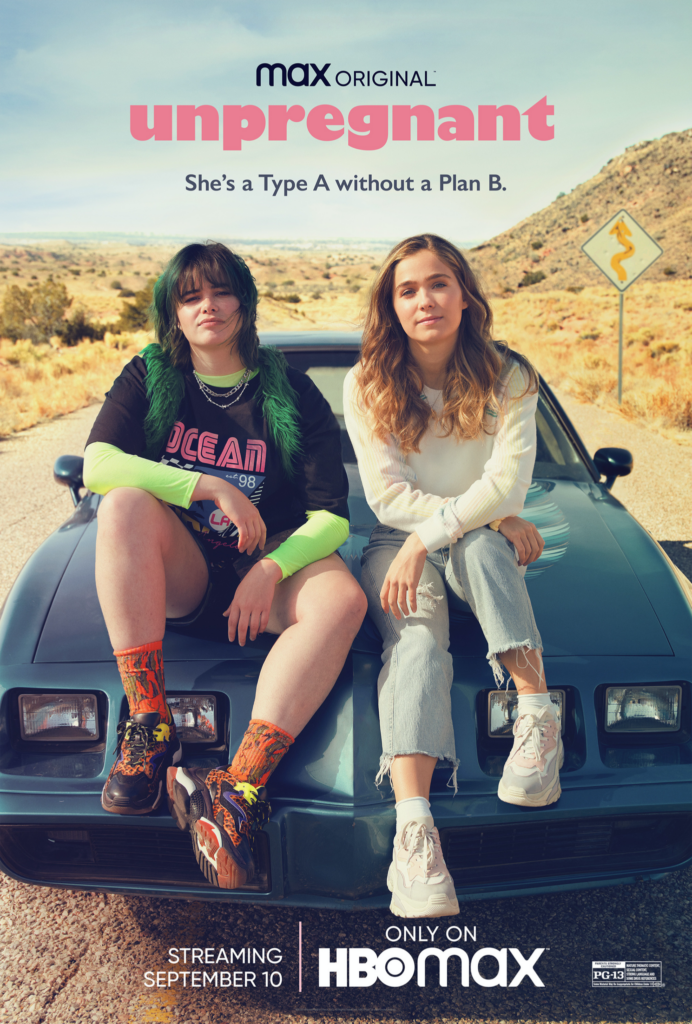
MM: From when you were first pitching this idea in 2012 to releasing it as a film now, do you feel like things have changed?
JH: I mean, I’m not sure it’s gotten better. In 1980s teen films like Dirty Dancing, there’s a whole plot around an abortion and in Fast Times at Ridgemont High, there was an abortion. It was much less stigmatized than once we hit the ’90s. I feel like it’s become more and more fraught as we’ve gone on rather than freer. So, writing, it was a response partially to that.
MM: Unpregnant came out just a few months after the film Never Rarely Sometimes Always, so it suddenly feels like abortion has returned to teen films. Do you think it’s important to make abortion the front-and-center topic, as opposed to a minor scene like in Fast Times at Ridgemont High?
JH: We’re not the only book either that came out in 2019 that had a similar plot—there is also Girls on the Verge and Rebel Girls. So, obviously this is in the air and people are wanting to talk about it. And hopefully, yes, the more that we get this out there and the more we normalize it in stories, then we can go back to just having it in a movie or a book and not needing for it to be the sole topic or the focus of the story.

MM: I’m fascinated that the film was PG-13—can you talk about that?.
JH: Actually, that was a conscious effort on the producer’s end. And I think it’s important to make this film as accessible to as many people as possible and slapping an R rating on a story about abortion immediately says, well, kids can’t talk about this.
But it’s a movie for teenagers and a story for teenagers. Our book has a lot more curse words in it than you can use in a PG-13 movie. So, we toned down the book to make sure that kids can see it with their parents and talk about it, which has been happening, which is great.
MM: In the book, the girls meet a pro-life stripper who becomes Bailey’s first kiss, while in the movie, the girls are abducted by a pro-life couple with a child, and her first kiss is with Kira, the race car driver. Was that also changed for the rating?
JH: Getting rid of the stripper and getting the girls out of the strip club was an important move, I think, to make it PG-13, But Kira Matthews, the race car driver, is my favorite add to the story. Bailey’s kiss in the book is a little more complicated because she’s kissing the bad guy, and it’s her first kiss. But there’s just pure joy in the movie—writing that scene was so much fun. It was just like cotton candy fluff, like here’s the fantasy of your first kiss. It’s a hot race car driver. Here you go, Bailey.
Having to take it out of the strip club, we basically separated that character into two parts. So, then we ended up with our pro-life crisis pregnancy center RV driving couple—which is real, thank you John Olliver, who did a whole special about it.
They very rarely ask you to make the budget bigger, but that was part of the mandate there, so we added a carnival scene and the chase scene to make it more visual. It’s just a fun, funny scene—and memorable. You won’t forget the lies that the pregnancy crisis people tell after you’ve seen them literally shouting them as they’re chasing down the girls in their RV.
MM: In the film, there’s a resolution between Veronica and her mother in the film that doesn’t exist in the book. Can you talk about that addition?
JH: I think it’s nice to see that moment of forgiveness and acceptance. We didn’t do it in the book because we wanted to leave Veronica in a place of strength where she knew that she could face whatever reaction that she’s going to get, because not everyone is going to be accepting of the decision. And so, we didn’t want to necessarily wrap everything up.
In the film, I liked that scene with her mother for the optimism that it showed, but I think the pessimist in me thought, how often does this actually happen? So now, we have both versions , which is good. Forgiveness and acceptance aren’t a guarantee. But on the other hand, showing forgiveness and acceptance is an important thing that might inspire people to be more like that.
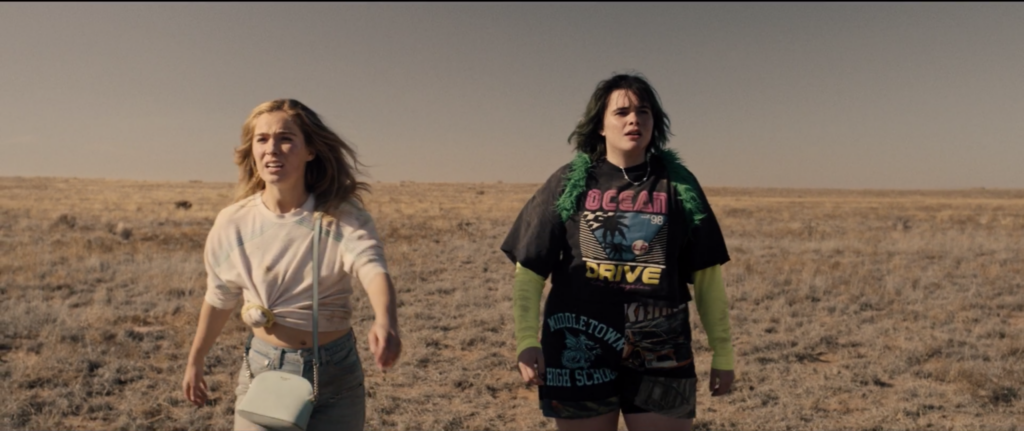
MM: What was your own idea of abortion as a young person growing up?
JH: I was raised Catholic in a conservative family, but it was actually my mom who first pointed out to me the issue with parental consent laws. We were in church—it was about 1997—and our priest was speaking out against the California courts officially striking down the 1987 parental consent law that had never been enforced. And in the car after mass, she was like, just so you know while we would hope that you would be comfortable coming to us and telling us if you needed an abortion, not every girl, she said, has that privilege. They could be in a situation where they would be abused if they came forward. There could be incest—you don’t know what the person’s personal circumstances are. So, it’s important to not have parental consent laws to protect these vulnerable people and allow them to get the healthcare they need without endangering themselves.
She hit home where I realized, okay, just because my life seems fairly straightforward and simple that doesn’t mean that everybody is in similar circumstances.
Because abortion was often the topic in church. Every week we pray. You don’t really think about it because you’re little, so you just say the words and you’re not really thinking about what it means. But it’s clear they think abortion’s bad. Let’s pray for those who’ve had abortions—every week.
So it wasn’t until my mom started to have those conversations that made me think critically about what it really meant and to consider the larger picture rather than just take what they were saying at face value.
MM: How did you feel about reproductive coercion, which was an important part of the book, being removed for the film version?
JH: So in the book, Kevin pokes the holes in the condom and it’s much clearer that he’s abusive and that’s the micro theme of control with the macro theme of control being the laws. So, we were trying to reflect that back and forth. But I think in a PG-13 movie, having an overtly abusive boyfriend might have overwhelmed the story and made it more uncomfortable and scarier.
That is not to say that it does not happen. I know someone that has happened too, and we’ve had people come up to us and say that their boyfriends have done that, have poked holes in the condoms. So, it’s very grounded in reality. But it’s probably a bit too intense for a PG-13, and it might have detracted from the main message of the story.
MM: I can’t help but notice, too, that in several recent films that have dealt with teen abortion, the boyfriends are abusive. And even in Unpregnant, Kevin, is still seen as a stalker. It makes me wonder about some of our associations about abortion and sex and promiscuity—and about stereotypes about when abortion is acceptable.
JH: Yeah. When do you have the perfectly acceptable abortion? Probably never, according to a lot of people.
Abortion just needs to be shown more because there is no one person who gets an abortion. It needs to be shown in media and books, without judgment in the multitude of situations that people actually need to get abortions.
I mean, the statistics actually show that teenage girls are not the ones who most often get abortions. It’s usually people who are already parents. So, we need more of those stories out there. We need more stories of women of color.
So, it’s not to say that Veronica is the definitive version of a person who needs an abortion. She’s just one example. So I think that the answer is just to have more stories out there, and not necessarily the center of the story, but like a B plot or a C plot. And then that will hopefully start to de-stigmatize it. Obviously, we have a long way to go.
MM: With RBG’s death, it’s hard not to fear once again for the future of Roe v. Wade and abortion rights. What are your thoughts?
JH: Obviously, like many people, I was devastated at the news of Ruth Bader Ginsburg’s passing. Her importance as a champion for women’s rights cannot be understated. It’s clearer than ever that the fate of abortion access in our country is precarious. If Roe v. Wade is overturned, the thousand mile road trip Veronica takes in Unpregnant could become depressingly common. Ruth Bader Ginsburg spent her life fighting for our rights; now it’s our turn to fight to preserve her legacy.
You may also like:




